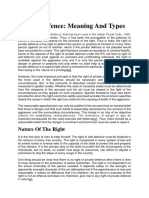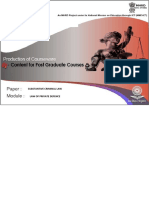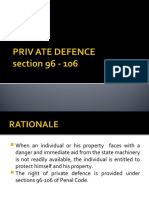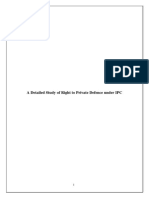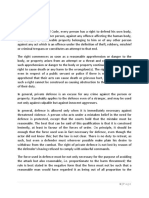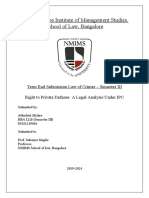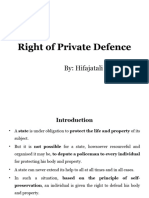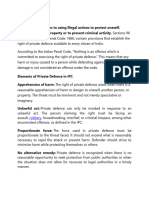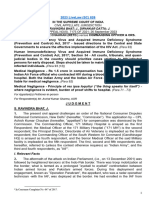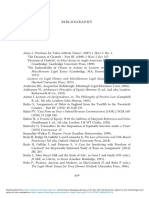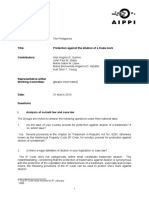0% found this document useful (0 votes)
93 views24 pagesGeneral Exceptions Part II
The document discusses the Right of Private Defence, which allows individuals to protect themselves and others from imminent threats to life and property, as outlined in various sections of the BNS. It emphasizes that this right is not punitive, must be proportionate, and is available only under specific circumstances, including the presence of a reasonable apprehension of danger. Judicial interpretations highlight the importance of this right in society, while also cautioning against its misuse and the necessity for it to be exercised within legal limits.
Uploaded by
mahaanu61Copyright
© © All Rights Reserved
We take content rights seriously. If you suspect this is your content, claim it here.
Available Formats
Download as PDF, TXT or read online on Scribd
0% found this document useful (0 votes)
93 views24 pagesGeneral Exceptions Part II
The document discusses the Right of Private Defence, which allows individuals to protect themselves and others from imminent threats to life and property, as outlined in various sections of the BNS. It emphasizes that this right is not punitive, must be proportionate, and is available only under specific circumstances, including the presence of a reasonable apprehension of danger. Judicial interpretations highlight the importance of this right in society, while also cautioning against its misuse and the necessity for it to be exercised within legal limits.
Uploaded by
mahaanu61Copyright
© © All Rights Reserved
We take content rights seriously. If you suspect this is your content, claim it here.
Available Formats
Download as PDF, TXT or read online on Scribd
/ 24







